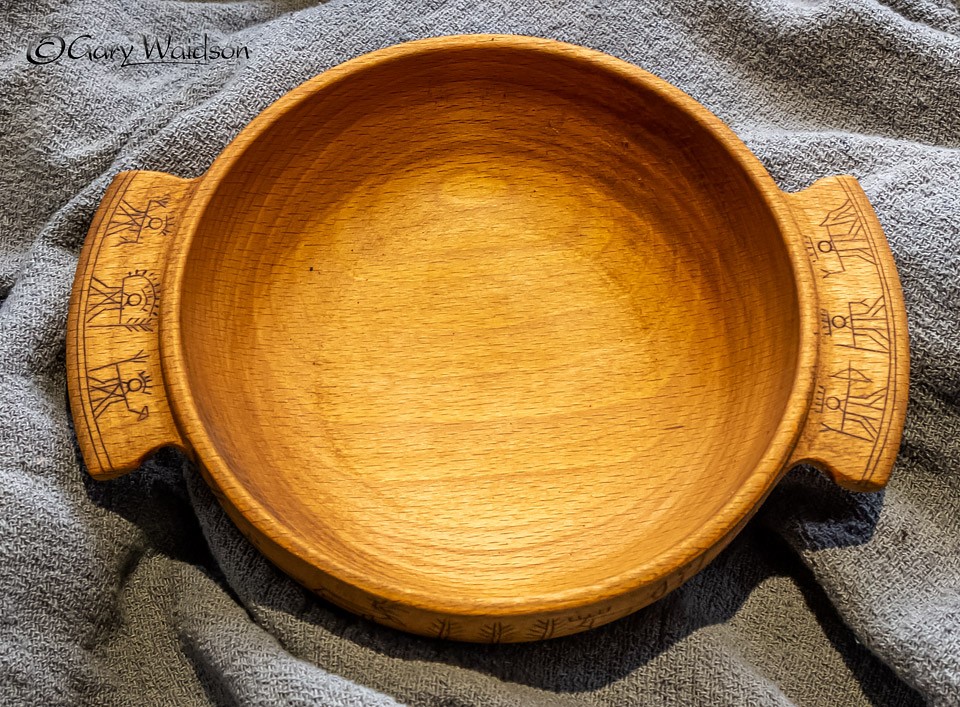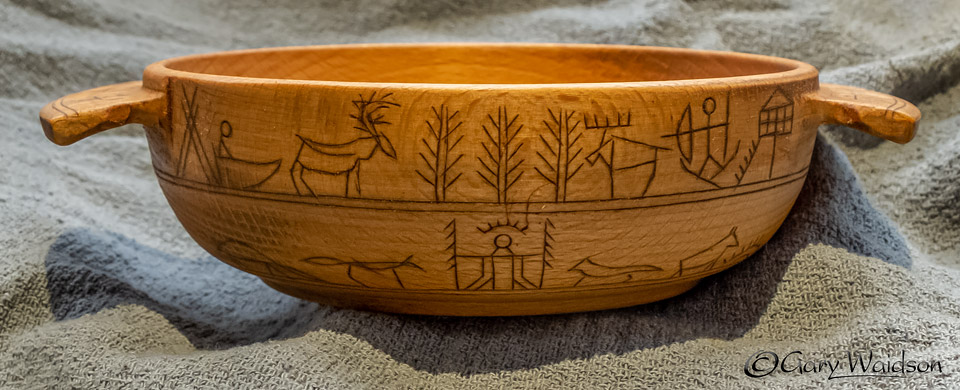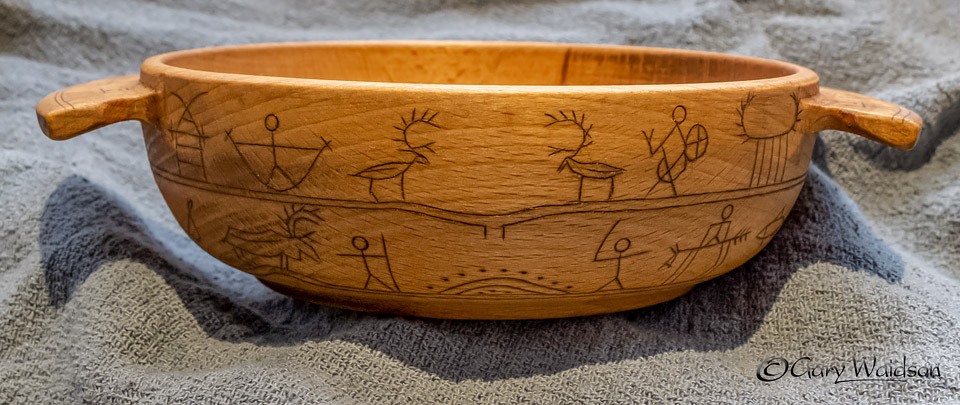
Many of you know I have a deep interest in Norse mythology. Over the years it has developed into a fairly solid working knowledge and understanding of the surviving stories, but I am also intrigued by it's relationship with the neighbouring Sámi world view.
I did a little Kolrosing on the eating bowl I'm intending to take on my upcoming Winter trip to Kittilä in the Boreal forest of Arctic Finland yesterday.
I've had this for a while but didn't want to add the drum symbols until I had a better understanding of their meanings.
It's always a little tricky when you are using iconography from a living culture. There can be a very fine line between seeking inspiration and cultural appropriation and I'm a firm believer that you shouldn't just use cultural symbols unless you at least try to have some understanding of them.

These symbols are all taken from Sámi Noaidi (Shaman) drums and relate to important figures and places in the Sámi mythology or cosmology, depending on your point of view.
Having done a lot more research I felt I finally had enough of a grasp to lay them out in a logical and sensitive manner.

Their use as decorative motifs on a bowl is rather out of context but as a story teller I want to use the bowl as an "aid memoir", that I could take on the trip with me, to a fascinating pantheon that I am not yet completely familiar with.
Last edited:
